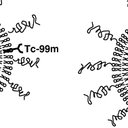The studies of chlorogenic Acid antitumor mechanism by gene chip detection: the immune pathway gene expression.
Maneno muhimu
Kikemikali
Persistently increasing incident of cancer in human beings has served to emphasize the importance of studies on mechanism of antitumor substances. Chlorogenic acid (CA), extracted from folium cortex eucommiae, has been confirmed to have lots of biological activities encompassing inhibition of tumor. However, the anticancer mechanism of CA remains unclear. Here, we have utilized a whole mouse genome oligo microarray (4∗44K) to analyze gene expression level of female BALB/c mice (implanted with EMT-6 sarcoma cells) after treatment with low, medium, and high-dose CA (5 mg/kg, 10 mg/kg, and 20 mg/kg), docetaxel, interferon, and normal saline separately at 6 time points (3rd, 6th, 9th, 12th, 15th, and 18th days after administration). Differentially expressed genes screened out by time-series analysis, GO analysis, and pathway analysis, and four immune-related genes were selected for further confirmation using RT-qPCR. The results demonstrated that CA is able to change gene expression and that the responsive genes (CaN, NFATC2, NFATC2ip, and NFATC3) involved in immune pathways had been significantly upregulated by CA. Expression of immune factors such as IL-2R and IFN- γ can be improved by CA to promote activation and proliferation of T cells, macrophages, and NK cells, thus enhancing their surveillance and killing abilities, further suppressing the growth rate of tumor cells.





